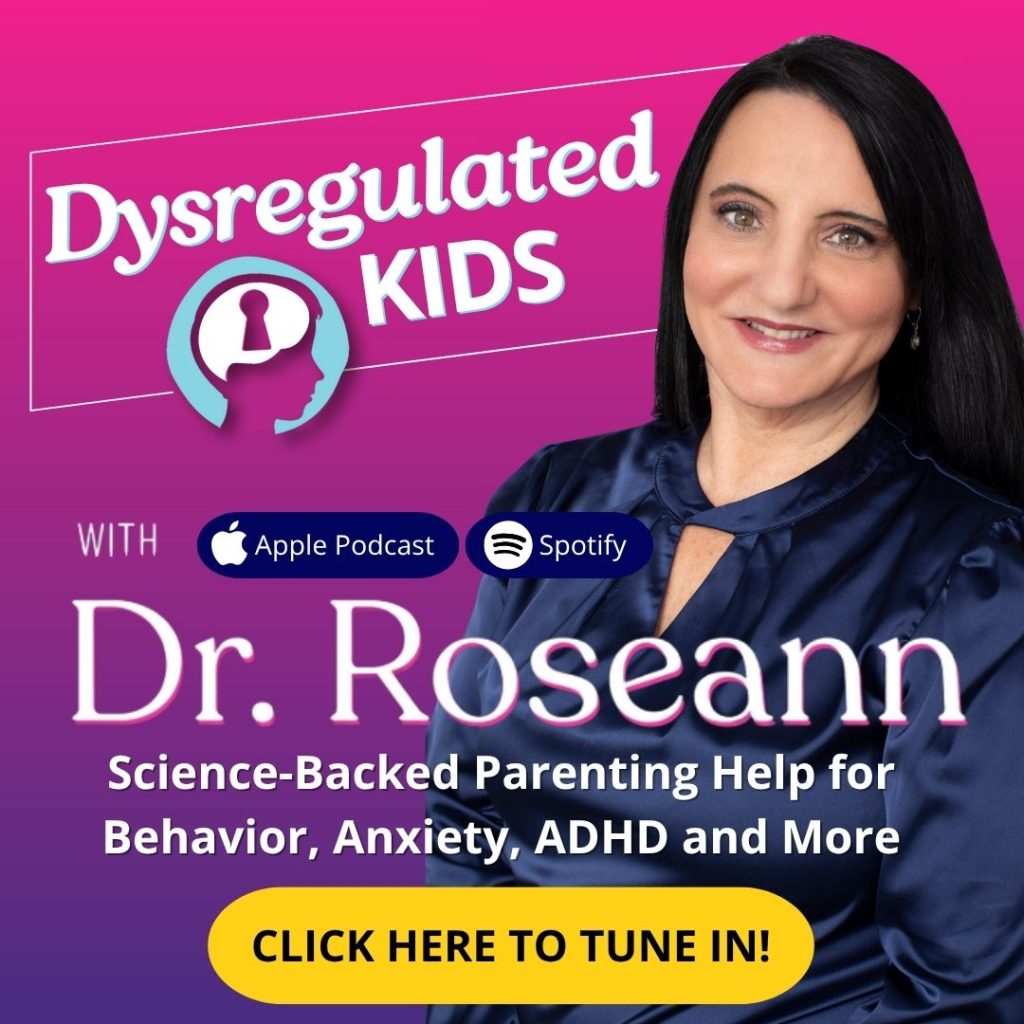Estimated reading time: 7 minutes
Do daily routines, homework, and transitions feel like a tug-of-war? This guide shows you how to calm the brain and build the executive skills your autistic child needs.
If your child’s behavior feels out of control lately, you’re not alone. When the nervous system is dysregulated, behavior is communication, not defiance.
In this guide, I’ll explain what Executive Functioning Autism looks like. Why does it happen? And you can take practical steps, starting today, to make life smoother for your child and for you.
You’ll learn how to Regulate → Connect → Correct™, with simple routines and sensory-smart strategies. These are science-backed tools that help your child focus, plan, and follow through.
What is “Executive Functioning Autism”?
Executive functions are the brain’s self-management skills: working memory, inhibitory control (impulse control), cognitive flexibility (shifting), planning, time management, and organization.
Many autistic children have measurable challenges across these areas (Demetriou et al., 2018). In plain terms, EF is how a child remembers multi-step directions, waits their turn, switches tasks, and finishes what they start.
Key takeaway: Let’s calm the brain first. A dysregulated nervous system makes executive skills harder to use, no matter how bright or motivated a child is.

How Do Executive Function Challenges Show Up at Home and School?
Short answer: in all the places where follow-through matters.
At home
- Trouble starting tasks (e.g., homework, getting dressed) without repeated prompts
- Forgetting steps in routines: brush teeth → pack backpack → shoes
- Big reactions to minor changes (difficulty shifting)
At school
- Losing materials, missed deadlines, and incomplete classwork
- Blurting out or interrupting; trouble waiting or sharing
- Overwhelm during transitions (recess → class, one subject → another)
Parent story: Sheina’s son could explain his homework perfectly, yet never started it. We added a visual checklist, a 2-minute body/breath break, and a timer-based “start ritual.” Within two weeks, he began on his own most days.
Takeaway: Break initiation into a calm cue + micro-step + clear finish line.
| Executive Functioning Skill | Typical Development | Autism |
|---|---|---|
| Task Initiation | Starts independently, knows the first stepNeeds prompts; unsure how to begin | Needs prompts; unsure how to begin |
| Cognitive Flexibility | Adapts to changes with minimal stress | Distress with changes; fixates on routines |
| Working Memory | Holds steps in mind to complete tasks | Loses steps; needs visual supports |
| Impulse Control | Delays responses and manages urges | Acts quickly; interrupts or grabs |
| Organization | Keeps materials and tasks orderly | Misplaces items; messy workflow |
What Causes EF Difficulties in Autism—and Can They Improve?
Research shows autistic individuals often have moderate, broad EF differences compared to neurotypical peers. And this pattern is relatively stable across development (Demetriou et al., 2018).
Newer studies also show that sensory processing and motor skills are tightly linked to EF. It addresses sensory-motor foundations that can improve day-to-day executive functioning (Alsaedi, 2025).
Longitudinal meta-analysis indicates EF challenges persist over time. But, this does not inevitably worsen; with support, children grow their skills (Bai et al., 2025).
What this means for your family:
- Calm + sensory regulation first → EF skills become accessible
- Practice builds pathways → small, repeated reps beat “big talks”
- Growth is possible → support the nervous system; coach one skill at a time
Parent story (Marco, dad of a 12-year-old on the spectrum):
Mornings were chaotic. We added predictable sensory input (chewable necklace + wall push-ups). It’s a one-page visual, and two alarms (start + 5-minute wrap). Within a month, Marco’s son was out the door on time most days.
Takeaway: When the body feels safe, the brain can plan.
What To Do To Help Autistic Children with EF
Start with Regulate → Connect → Correct™ and layer in EF-friendly tools.
Regulate (calm the brain first)
- 2–3 sensory anchors per routine (e.g., deep pressure, movement, breath)
- Micro-breaks every 20–30 minutes; “sip of water + 4-count exhale”
- Environment hygiene: reduce visual clutter; one task per workspace
Connect (co-regulate)
- Warm tone, few words, eye level; “I’m with you. First step is the header.”
- Offer choices that reduce cognitive load: “Start with the first three problems or the diagram?”
Correct (coach the skill)
- Visual checklists with 3–5 steps max
- Timers (2-minute “just start” + overall time block)
- Task slicing: break into tiny first actions (name on paper ➝ write header)

What Should You Try When Plans or Meltdowns Loom
Pre-brief and rehearse the pivot. Autistic brains love predictability. Build a script.
Use This Pivot Plan
- Acknowledge + anchor: “Change of plans. Deep breath together.”
- State the new first step: “We’re going to Grandma’s. First shoes, then water bottle.”
- Offer sameness: keep one familiar item/action (favorite hoodie, same snack)
- Close the loop: “We’ll do the playground tomorrow after school.”
Parent story: Priya’s 7-year-old daughter with ASD melted down whenever dance class was canceled. We used a “change card” and two-choice sameness (same snack + same 10-minute scooter ride). Meltdowns dropped from weekly to rare.
Takeaway: Keep one piece the same when the plan changes.
Which Professionals Can Support Executive Functioning in Autism?
- Occupational Therapy (OT): sensory processing, motor planning, visual schedules
- Speech-Language Pathology (SLP): following directions, sequencing, social communication
- Psychology/Neuropsychology: EF assessment, anxiety/behavioral supports
- Behavioral therapy: skill-building and coping strategies; collaborate on a regulation-first plan
How to Vet Providers
- Ask how they integrate sensory regulation and EF coaching
- Request home-school carryover tools (visuals, checklists, scripts)
- Look for family coaching so you’re not doing this alone
How Does a Regulation-First Approach (Including Neurofeedback) Support EF in Autism?
In my BrainBehaviorReset Program, we start by calming the nervous system and tailoring support to each individual. QEEG brain mapping can help identify patterns of dysregulation, which guide targeted interventions.
Neurofeedback aims to promote more stable brain activity. So, executive skills are easier to access.
Evidence continues to evolve. Results vary and are highly individual. So, we combine lifestyle, sensory-motor supports, coaching, and school collaboration. (As always, consult your healthcare provider.)
“Executive functions are the brain’s self-management system,” says Russell A. Barkley, PhD. Self-management gets easier when we lower stress and practice skills in bite-sized steps.
You’re Not Failing—Your Child’s Brain Needs Calm To Learn
Executive Functioning Autism isn’t about willpower. It’s about a dysregulated brain doing its best.
When we calm the system, coach one micro-skill, and make the environment do the heavy lifting. Then, kids can start, stick with, and finish tasks.
FAQs About Executive Functioning Autism
How is executive function different from intelligence?
EF is how we use what we know. Very bright kids can still struggle with task initiation, planning, and flexibility.
Can EF really improve in autism?
Yes—especially when we calm the nervous system and practice small steps consistently. Longitudinal research indicates that EF gaps persist, but growth occurs with support (Bai et al., 2025).
Is this ADHD or autism—or both?
EF challenges appear in both. Assessment clarifies your child’s profile, so supports are targeted.
What’s one change that helps most families?
A visual routine + 2-minute start ritual. When starting is easy, finishing follows.
Next Best Steps
Terminology
- Executive Function (EF): The Brain’s self-management system for planning, memory, focus, and control.
- Working Memory: Holding steps in mind to complete a task.
- Inhibitory Control: Pausing before acting or reacting.
- Cognitive Flexibility: Shifting between tasks or coping with change.
- Co-regulation: Your calmness helps your child’s brain calm.
- QEEG: A brain-mapping tool that measures electrical patterns to inform individualized interventions.
- Neurofeedback: Training aimed at helping the brain spend more time in regulated patterns.
Citations
Alsaedi, R. H. (2025). Relation between executive functioning, sensory processing, and motor performance in children with autism. BMC Pediatrics, 25, 457. https://bmcpediatr.biomedcentral.com/articles/10.1186/s12887-025-05756-9 BioMed Central
Bai, J., Yeung, K. C. M., & Kim, S. A. (2025). Longitudinal changes in executive function in autism spectrum disorder: A systematic review and meta-analyses. Autism Research. https://onlinelibrary.wiley.com/doi/10.1002/aur.3196
Demetriou, E. A., Lampit, A., Quintana, D. S., Naismith, S. L., Song, Y. J. C., Pye, J. E., Hickie, I., & Guastella, A. J. (2018). Autism spectrum disorders: A meta-analysis of executive function. Molecular Psychiatry, 23, 1198–1204. https://www.nature.com/articles/mp201775
Always remember… “Calm Brain, Happy Family™”
Disclaimer: This article is not intended to give health advice, and it is recommended to consult with a physician before beginning any new wellness regimen. The effectiveness of diagnosis and treatment varies by patient and condition. Dr. Roseann Capanna-Hodge, LL,C does not guarantee specific results.
Are you looking for SOLUTIONS for your struggling child or teen?
Dr. Roseann and her team are all about science-backed solutions, so you are in the right place!
©Roseann Capanna-Hodge










